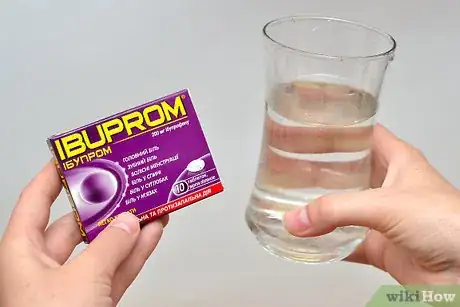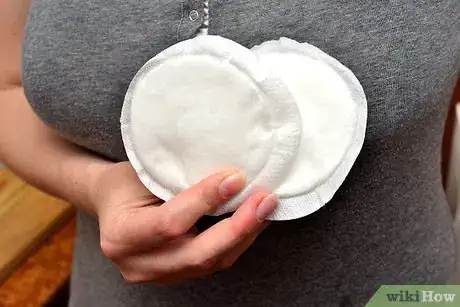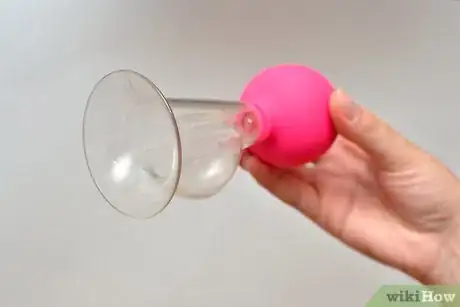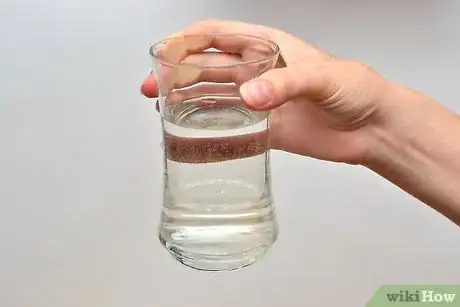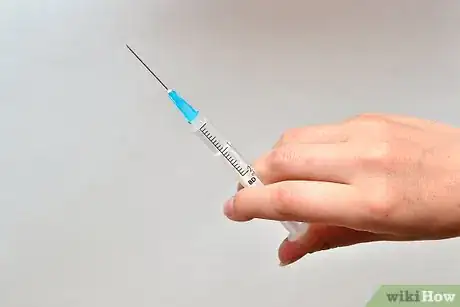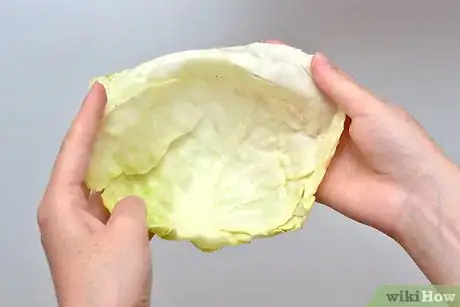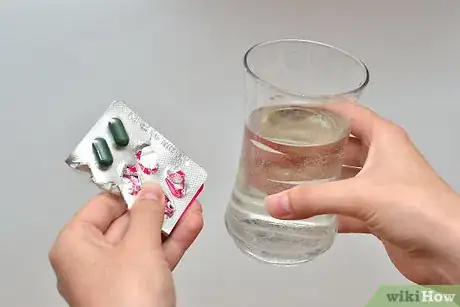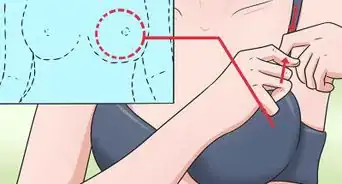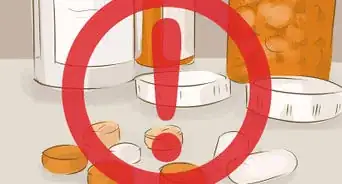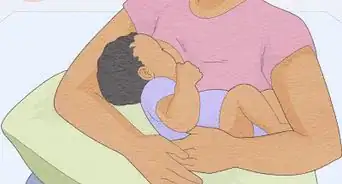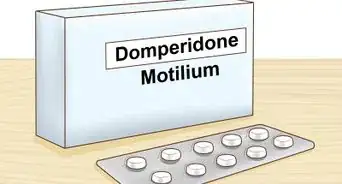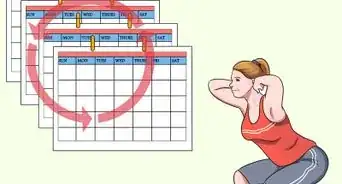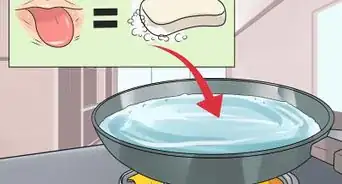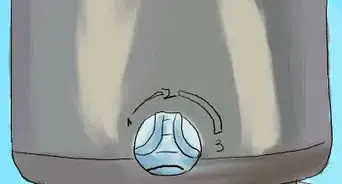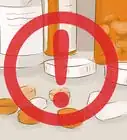This article was co-authored by Rebecca Nguyen, MA. Rebecca Nguyen is a Certified Lactation Consultant and Childbirth Educator. She runs Family Picnic in Chicago, Illinois with her mother Sue Gottschall, where they teach new parents about childbirth, breastfeeding and child development and education. Rebecca taught preschool through 3rd grade for 10 years, and she received her Master’s Degree in Early Childhood Education from the University of Illinois in 2003.
wikiHow marks an article as reader-approved once it receives enough positive feedback. This article received 17 testimonials and 83% of readers who voted found it helpful, earning it our reader-approved status.
This article has been viewed 2,435,693 times.
Whether you choose to breastfeed for one month or one year, you will eventually want to stop. Some women may have their breast milk supply dry up naturally, but most do not. Read on to learn some tricks to help speed up this process.
Steps
Doctor-Recommended Advice
-
1Wean gradually, whenever possible. Start replacing one or two feedings a day, and work your way to completely stopping. This is the safest, and most painless way as your body will slowly stop producing milk.
- Breasts that are not weaned gradually, but suddenly, can become painful, engorged, and even put mothers at significant risk for developing mastitis.[1]
- If you have been pumping and wish to stop, here is a typical schedule[2]
that will wean you off your pump slowly but surely:
- Day 1: pump for 5 minutes every 2-3 hours
- Day 2: pump for 5 minutes every 4-5 hours
- Day 3-7: pump just long enough to relieve discomfort
EXPERT TIPRebecca Nguyen is a Certified Lactation Consultant and Childbirth Educator. She runs Family Picnic in Chicago, Illinois with her mother Sue Gottschall, where they teach new parents about childbirth, breastfeeding and child development and education. Rebecca taught preschool through 3rd grade for 10 years, and she received her Master’s Degree in Early Childhood Education from the University of Illinois in 2003.International Board Certified Lactation Consultant
 Rebecca Nguyen, MA
Rebecca Nguyen, MA
International Board Certified Lactation ConsultantTry eliminating one breastfeeding session at a time. Lactation consultant Rebecca Nguyen says: "Gradual weaning will be physically and emotionally easier on both you and on your baby. Start by taking one feeding away, then see how your body and your baby react to that. Then, take out another feeding, and another. It's usually best to save the bedtime feeding for the last one, because that's when your baby is tired and cranky and will want to breastfeed the most."
-
2Take a pain reliever containing ibuprofen or acetaminophen. This should reduce your discomfort and some swelling.Advertisement
-
3Avoid nipple stimulation, as this will trigger milk production. Wear a supportive, but not-too-tight bra. Opt for clothing that is loose and less likely to show milk spots; consider wearing nursing pads to absorb leaking milk.
- Taking a warm shower, although it inevitably involves some stimulation, may help to relieve pressure in the breast and soothe discomfort. Avoid direct stimulation from the water whenever possible.
-
4Avoid pumping your milk as it signals to your body that it needs to produce more. If you start to become engorged, hand pump just enough to reduce your discomfort.
-
5Drink lots of water. If you become dehydrated, you will actually start producing more milk, and your discomfort will increase.
-
6In severe cases, talk to your doctor about estrogen injections. Estrogen injections have fallen out of favor, although they were once used to promote estrogen suppression. Some forms of estrogen injections contain known carcinogens.[3]
- If you have consistent trouble with lactation suppression, ask your doctor about taking medications like bromocriptine (Parlodel). Doctors usually don't recommend taking Parlodel because of increased likelihood of hypertension, stroke, and heart attack.[4]
-
7Prepare emotionally. Hormone levels will change drastically as your milk production slows, which will trigger mood swings. Many women feel guilty, inadequate and sad. Getting through these emotions may be the hardest part of the whole process, but having a good support system will help.
Unverified Home Remedies
-
1Drink sage tea. Sage contains a natural estrogen that is reputed to dry up your milk supply. You can find sage in one of two forms:
- As a tea: buy sage tea at your local specialty health store, and brew it along with some milk and honey.
- As a tincture: buy a sage tincture, which is mixed with a little bit of alcohol, at a health food store. This tincture is reputed to be a bit more efficient than sage tea at drying up your milk supply.
-
2Apply cold compresses or cabbage to your breasts. Cabbage leaves work great as they are cool, and there is a component to them that naturally dries up your milk. Apply them to your entire breast and replace them when they wilt.
-
3Take vitamin B6. Vitamin B6 is reputed to stop the body's production of plasma prolactin, which is what causes mothers to produce breast milk. Several studies, however, found no statistically relevant data to suggest that vitamin B6 actually helped women suppress lactation.[5]
Warnings
- If you stop breastfeeding quickly, it will take some time for your body and mind to get used to the new phase.⧼thumbs_response⧽
- Do not use heat on engorged breasts. This will increase the pain and may trigger milk production.⧼thumbs_response⧽
- Do not bind your breasts.⧼thumbs_response⧽
References
- ↑ http://www.breastfeedingbasics.com/articles/lactation-suppression
- ↑ http://www.medscape.com/viewarticle/464568
- ↑ http://www.ncbi.nlm.nih.gov/pubmed/9108600
- ↑ https://www.mayoclinic.org/healthy-lifestyle/labor-and-delivery/expert-answers/lactation-suppression/faq-20058016
- ↑ http://www.ncbi.nlm.nih.gov/pubmed/4058985
About This Article
To dry up your breast milk supply, try to wean gradually for the safest and most painless approach. Some pain and swelling is normal, and you can take a pain reliever containing ibuprofen or acetaminophen to combat any discomfort that you experience. Also, do your best to avoid nipple stimulation by wearing loose clothing and a supportive bra, and be sure to stay hydrated to prevent your body from producing excess milk. For tips on handling the emotions associated with this process, read on!

